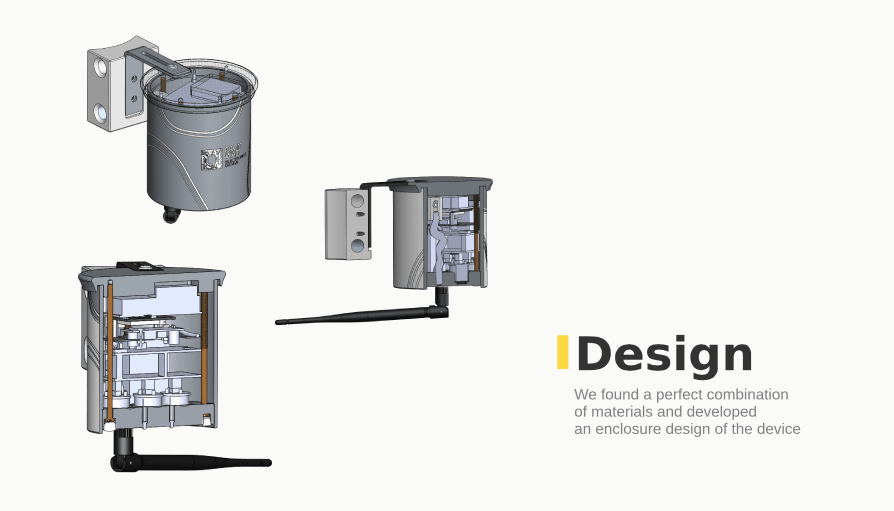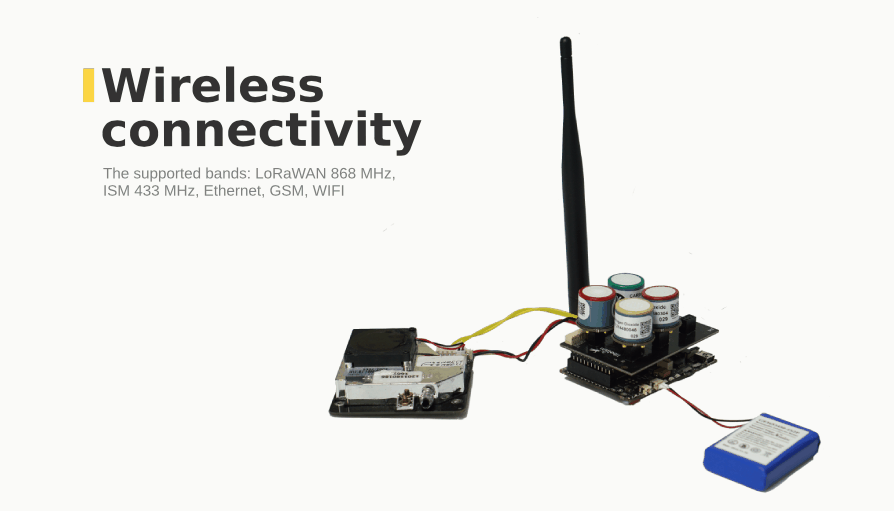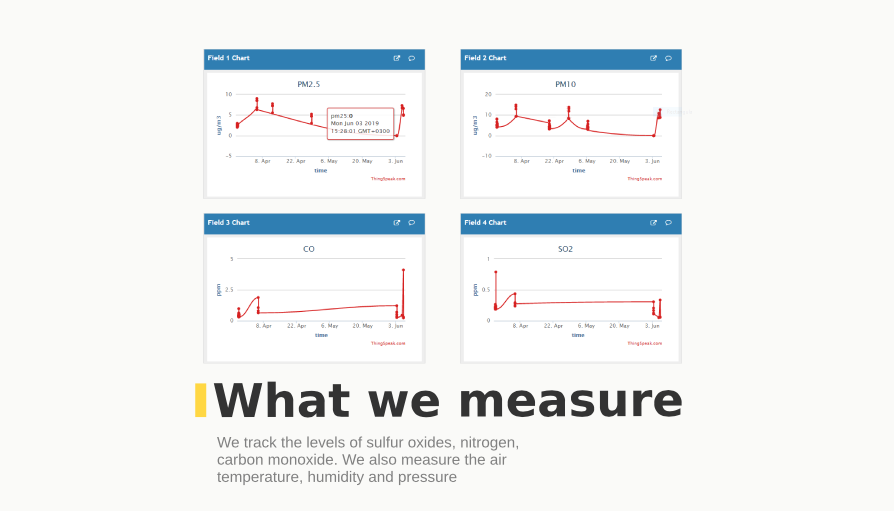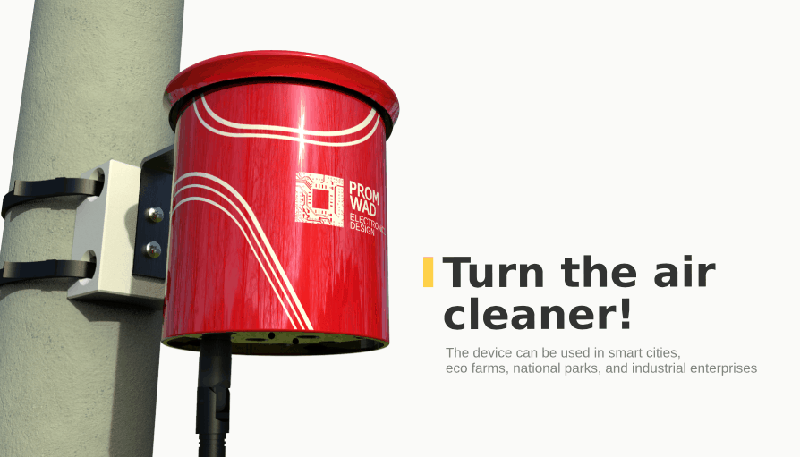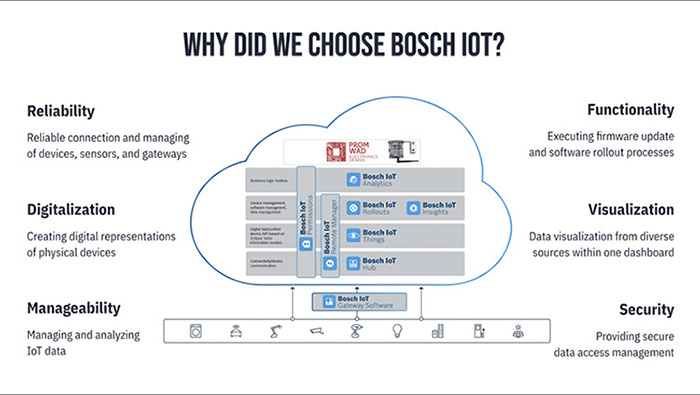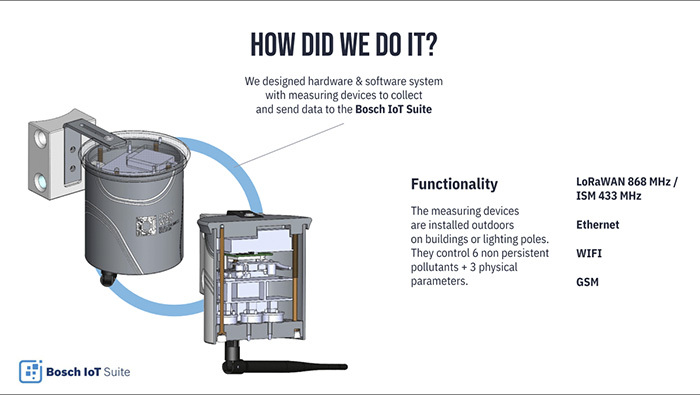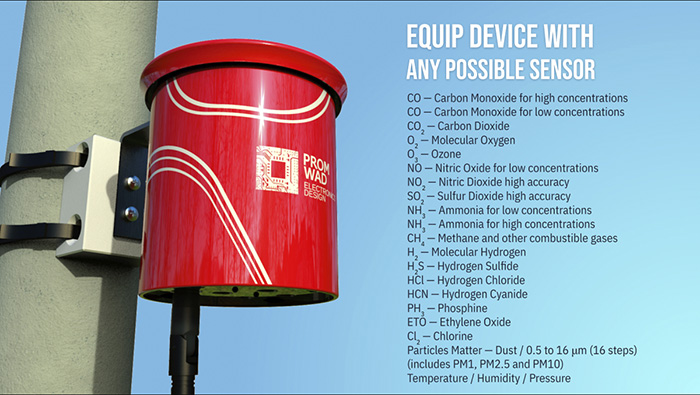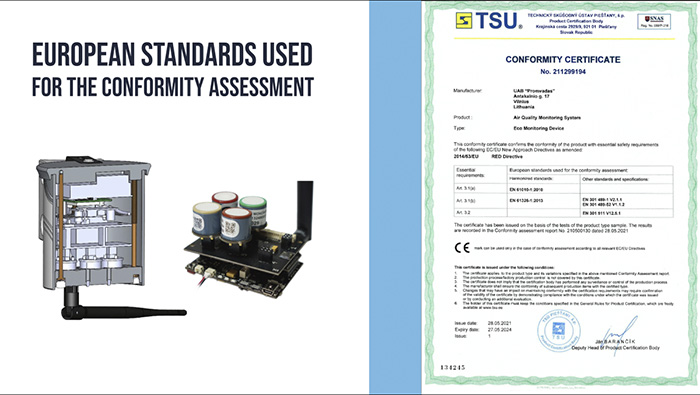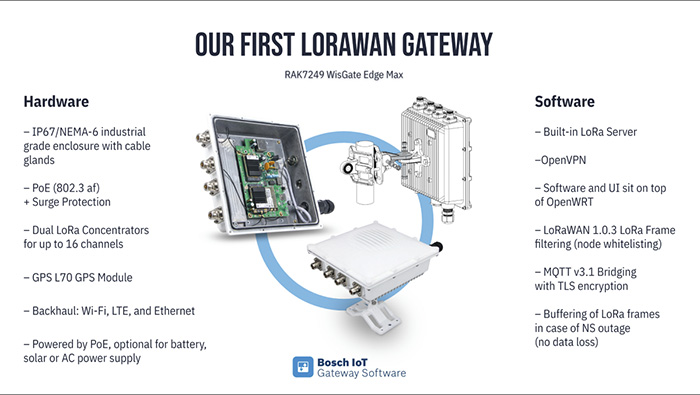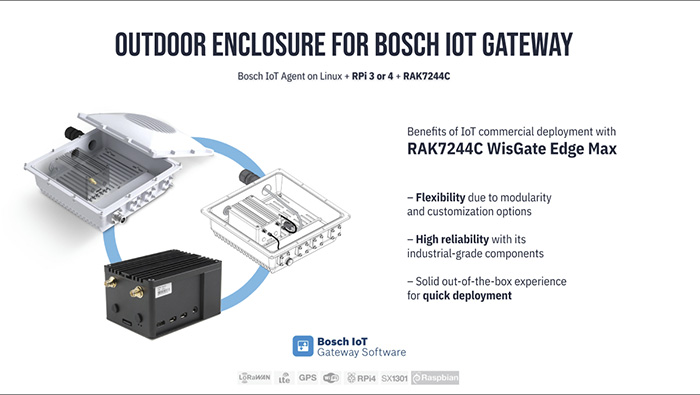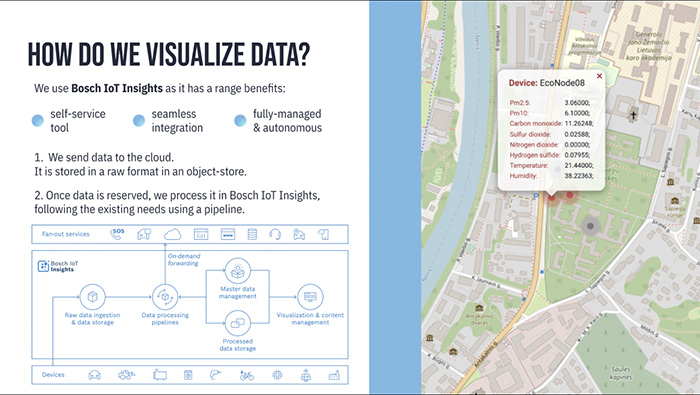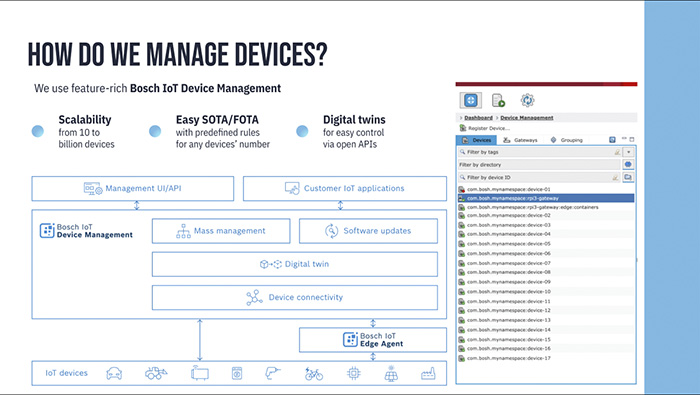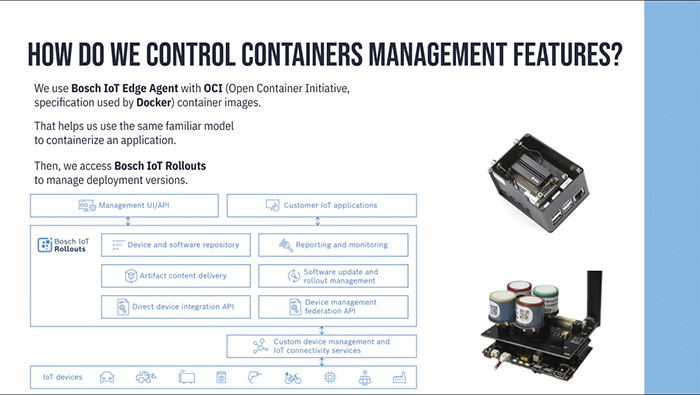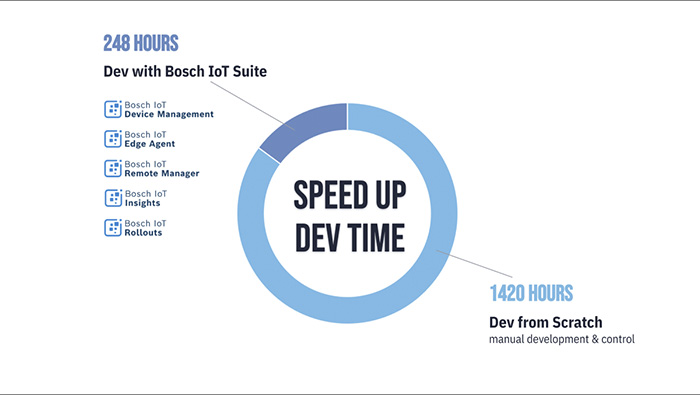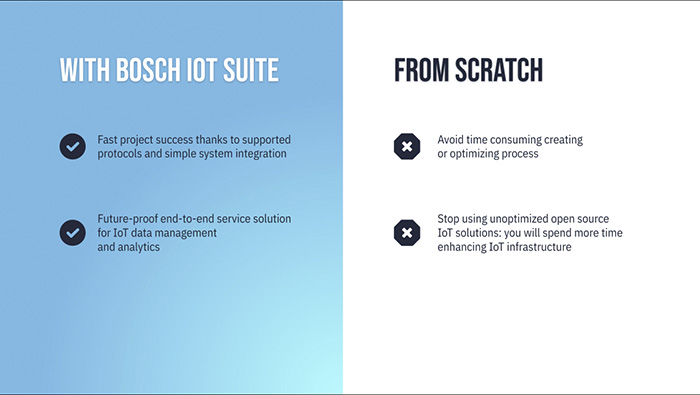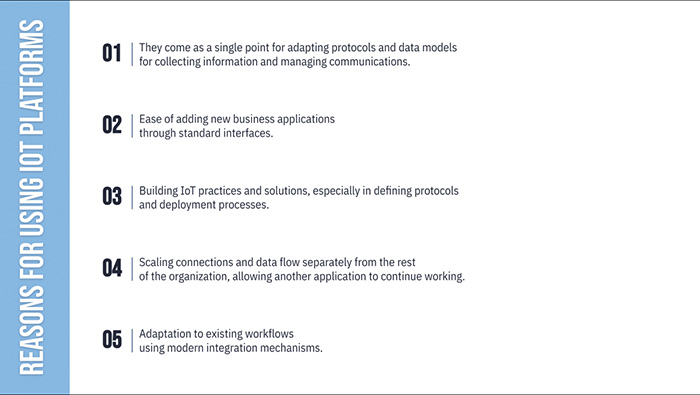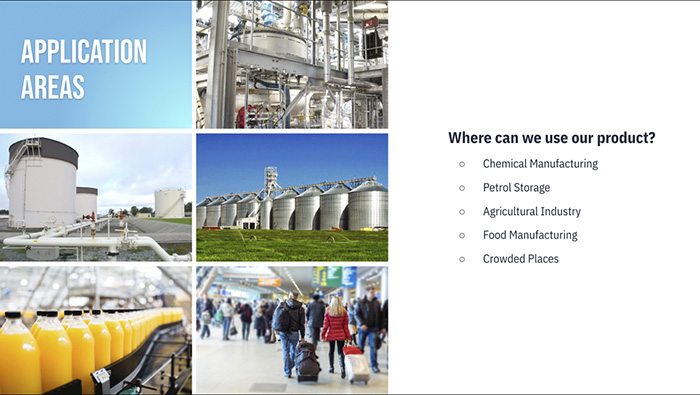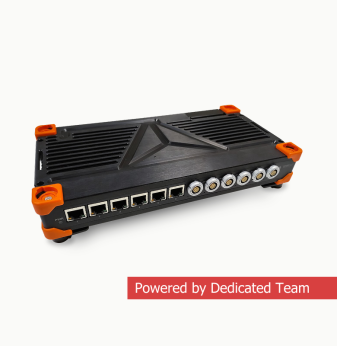Air quality monitoring system for clean & smart cities with Bosch IoT Suite
Challenge
We launched this ambitious project for government agencies and commercial companies to monitor air quality and launch new economic levers for ecological farming and environmental responsibility of industrial enterprises.
Information about the project in Lithuanian
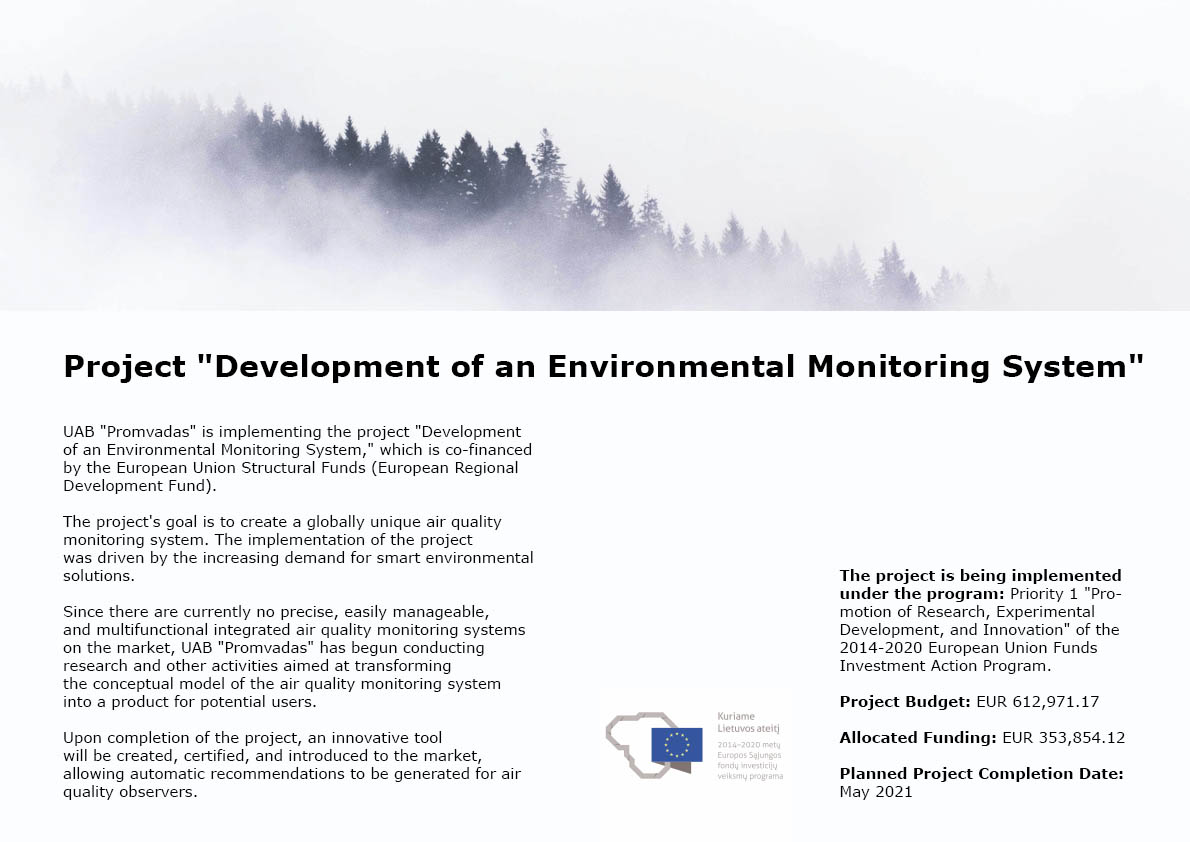
As a result, the system was developed with the support of European Union and Lithuanian funding, distributed by the Lithuanian Business Support Agency (LVPA).
Solution
We designed a hardware and software system with measuring devices to collect and send the data to an IoT cloud server for analysis, alerting, and generation of the real-time air pollution map. The supported bands: LoRaWAN 868 MHz / ISM 433 MHz, Ethernet, GSM, WIFI. The measuring devices are installed outdoors on buildings or lighting poles to control 6+ non- persistent pollutants + 3 physical parameters.
What we measure (unc. — uncertainty):
- CO, NO2, SO2 (unc. <25%)
- O3 (unc. <30%)
- PM2.5, PM10 (unc. <50%)
- Temperature, -40...+50 (unc. <1° C)
- Humidity, 0 to 100% RH (unc. <3% RH)
- Pressure, 30...110kPa (unc. <0.1 kPa)
- and more (please, find on the slides below)
Solution Update with Bosch IoT Suite
We are currently configuring data gathering and processing using Bosch IoT Suite. Bosch IoT Suite is an end-to-end toolbox for ensuring IoT device management and analytics.
The slides below will give you the answers to the following questions:
- Why did we choose Bosch IoT Suite?
- What is the system architecture?
- What are the hardware & software features of our LoraWAN gateway?
- How did we implement the enclosure?
- How do we visualize data?
- How do we manage devices?
- How do we control containers management features?
- Is our current project results estimation efficient? Why or why not?
- Where can we use our product?
We gathered everything here:
Business & Social Value
Non-persistent pollutants have a serious negative effect on climate and quality of life. Six billion people, including 2 billion children, breathe polluted air. Every year, 7 million people die from the effects of pollution.
Taking into account the issues of air pollution and climate change, the air control systems will be in demand by state and commercial companies: in smart cities; eco farms; national parks; as well as industrial enterprises — for tax reliefs and carbon trading within the Kyoto Protocol.


